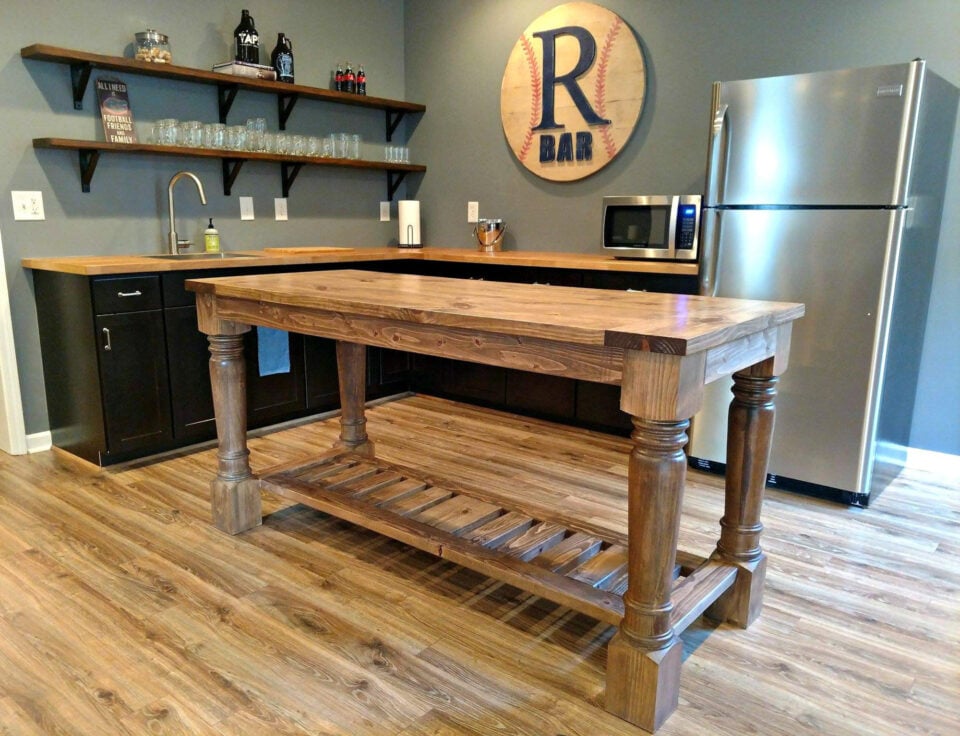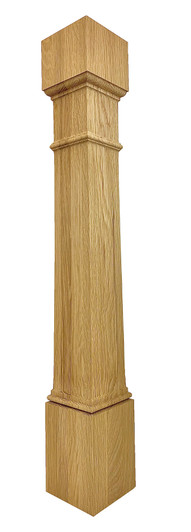Exactly how to Install a Kitchen Island Leg for Optimum Security and Style
Exactly how to Install a Kitchen Island Leg for Optimum Security and Style
Blog Article
How to Pick the Perfect Kitchen Area Island Leg to Boost Your Kitchen Area Design
Choosing the excellent cooking area island leg is a nuanced procedure that requires careful factor to consider of different elements such as style material, style, and functionality. An appropriate leg can not just sustain the structure yet additionally serve as a defining component that boosts the overall visual of your kitchen area.
Evaluate Your Kitchen Style
When it comes to selecting a kitchen area island leg, it's vital to assess your kitchen area style to guarantee a cohesive design. The kitchen area is commonly the heart of the home, and the island works as a useful and aesthetic focal point. For that reason, the selection of leg design ought to show the total motif of your cooking area, whether it be contemporary, typical, farmhouse, or commercial.
As an example, in a modern cooking area, sleek, straight legs in a minimal style may improve the structured appearance. On the other hand, a rustic cooking area may take advantage of hefty, transformed legs that communicate warmth and character. Consider elaborately designed legs that resemble traditional workmanship. if your cooking area features a classic design.
Pay interest to the proportions of both the island and the surrounding area; the leg's scale should enhance the total measurements. By straightening your leg choice with your kitchen's style, you create a linked and inviting setting that shows your personal aesthetic.
Think About Material Options
Choosing the appropriate product for your kitchen area island leg is vital, as it affects both resilience and aesthetic charm. Various products provide distinct benefits and can substantially influence the total layout of your kitchen.
Wood is a preferred option, known for its heat and adaptability. It can be discolored or repainted to match your cooking area's color design, giving a classic appearance. It may need even more maintenance to avoid damage from dampness and warm.
Metal legs, such as stainless-steel or wrought iron, evoke a contemporary and industrial feel. They are exceptionally long lasting and immune to damage, making them suitable for high-traffic areas. Steel can likewise be completed in various methods, permitting for modification in terms of structure and shade.
Another choice is composite materials, which incorporate appearances with usefulness. These can resemble the look of wood or steel while typically being lighter and simpler to keep.
Finally, consider stone legs, which can bring an extravagant touch yet may call for added structural support. Each product has its special attributes, so it's vital to pick one that straightens with your kitchen area's general style vision while making certain longevity and performance.
Explore Layout Features
Numerous design functions can enhance the performance and aesthetic allure of a cooking area island leg, making it an important component of the overall cooking area style. One essential facet to take into consideration is the design of the leg, which can vary from traditional transformed styles to streamlined, contemporary lines. The option of design should enhance the existing cabinetry and components, producing a cohesive appearance.
In addition to design, the finish of the leg can substantially impact the cooking area's visual allure. Choices such as painted, stained, or all-natural finishes can either highlight the leg as a declaration item or enable it to blend perfectly into the kitchen environment. Decorative elements, such as decorations or carvings, can likewise add personality and originality, transforming a simple leg into a prime focus.
Additionally, incorporating functional functions like open shelving or incorporated storage space can enhance utility while keeping visual value. The interplay of these layout includes not only boosts the kitchen island leg's appearance however additionally contributes to the general capability of the kitchen area. By thoughtfully picking these aspects, homeowners can guarantee their cooking area island leg serves both functional and ornamental purposes.
Determine Size and Elevation

Usually, the basic height for kitchen area island legs is around 30 inches, which straightens with the elevation of typical countertops and eating surface areas. Nevertheless, if your island offers a dual function, such as a morning meal bar, you may think about a higher leg gauging 36 inches. This height advertises a much more laid-back dining experience and suits bar stools comfortably
In regards to size, the leg must not just offer ample assistance yet additionally maintain aesthetic equilibrium. A width of 3 to 5 inches is usually perfect, permitting for adequate stability without subduing the total style. In addition, think about the spacing between the legs; they ought to be positioned to permit for very easy motion and access around the island.
Eventually, taking specific dimensions and thinking about the intended usage of the kitchen area island will certainly assist you in choosing the proper size and elevation of the legs, ensuring both visual appeal and functional performance in your kitchen read what he said area style. kitchen island leg.
Budgeting for Your Option

Next, determine the style that aligns with your kitchen's aesthetic. Custom-made legs may come with a costs, while pre-fabricated options usually use cost financial savings. It's important to balance your wanted visual with the usefulness of your spending plan.
Take into consideration additional prices that might arise, such as setup or ending up. If you're planning to work with a professional for installation, include these expenditures in your budget.
Lastly, designate a backup fund for unexpected prices that may arise during the renovation. By meticulously assessing these aspects, you can make educated decisions that not just enhance your kitchen's design yet also maintain your restoration within economic reach. A tactical budget will certainly make certain that you achieve the desired appearance without compromising your monetary goals.
Final Thought
In final thought, picking the ideal cooking find more area island leg requires careful consideration of different aspects, including the general cooking area style, product choices, style attributes, and suitable measurements. By lining up check that these aspects with the wanted aesthetic and functionality, a aesthetically enticing and unified kitchen area island can be achieved. In addition, budgeting for the chosen products and installation will certainly make certain that the option procedure remains viable and practical, eventually improving the kitchen area's design and usability.
When it comes to selecting a kitchen island leg, it's necessary to evaluate your kitchen design to ensure a cohesive layout.Numerous layout attributes can improve the functionality and aesthetic charm of a kitchen island leg, making it an important component of the total kitchen design. The interaction of these layout features not only boosts the kitchen island leg's look however additionally adds to the total capability of the cooking area space.Developing a budget for your kitchen area island leg is an essential step that can considerably affect your general kitchen improvement costs.In verdict, selecting the ideal cooking area island leg requires careful factor to consider of numerous variables, consisting of the overall cooking area design, material choices, design attributes, and suitable dimensions.
Report this page